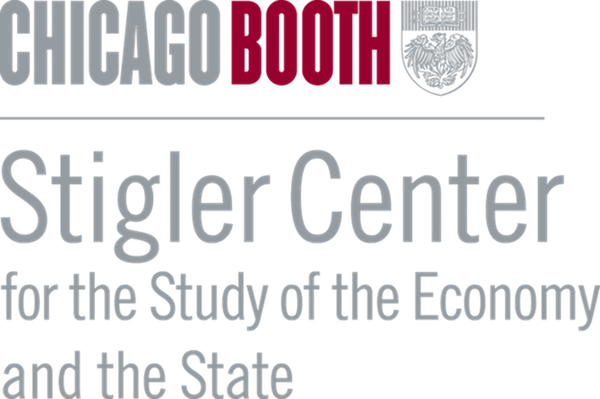The following is an excerpt from “Private Finance, Public Power: A History of Bank Supervision in America” by Peter Conti-Brown and Sean H. Vanatta, now out at Princeton University Press.
Since the turn of the century, bankers and bank reformers had promoted bank size, especially through branching, as a private risk management strategy that offered banks internal liquidity and geographic diversification. In the 1910s and 1920s, bankers pursued geographic expansion along different lines, shaped by the regulatory contexts in which they operated. In states that allowed branch banking, like California, state-chartered and—after the 1927 McFadden Act and more liberal 1933 Glass-Steagall Act—nationally chartered banks could grow in this way. Banking entrepreneurs also used chain banking (common ownership) and group banking (ownership under a holding corporation) to grow within states that restricted branching, and to grow across state lines.
Throughout the New Deal and into the postwar years, the question of bank size remained a deeply contentious political issue, driven by unit bankers who sought to retain their independence in the face of competition with larger, more diversified, better capitalized rivals. Unit bankers positioned themselves as champions of an economic democracy for small proprietors, and by extension champions of a political democracy shielded from totalitarian and monopolistic control. This symbolic language, which bankers mobilized first in opposition to federal control of banking during the New Deal, proved flexible. During World War II, they decried banking concentration as “the Hitler–Mussolini control attitude”; in the early Cold War they characterized it as a step on the road to communism. In speeches, letters to public officials, and articles in the banking press, small bankers and their allies beat the drum against bigness in banking.
Cornerstones of the business and financial elite in every part of the country, these unit bankers enjoyed robust congressional support. Paul H. Douglas, former University of Chicago economist and senator from Illinois, a unit banking state, made the small bankers’ case succinctly in 1956: “Big banks commonly find it much easier and more to their liking to do business with big business rather than with little business,” a refrain that would be repeated again and again as the debates over bigness trundled on.
For all the hue and cry over the death of unit banking, the effects of concentration on the nation’s banking structure appeared mixed. In the states that permitted branching, branch banking grew rapidly in the postwar years. While the total number of banks declined slightly between 1945 and 1960, from around 14,700 to 14,000, the number of branches expanded from 4,200 to 11,100. Meanwhile, large holding companies, especially California’s Transamerica, continued national expansion projects that had begun before the war. There was much to worry small bankers; yet politicized fears of banking concentration did not reflect market conditions in most places. The booming postwar economy raised all boats, and suburbanization tended to channel household savings into banks and thrifts outside downtown commercial districts. Thus, while branching increased and the largest banks got larger, banking concentration fell from the end of the war until at least 1960. Congress, still stocked with antimonopolists deeply averse to financial bigness, nevertheless became focused on two related issues: how to supervise bank holding companies and how to manage bank mergers.
The New Deal and the Problem of Banking Monopoly
The bank holding company problem had its origins in the unresolved institutional rivalries of the New Deal, simmering through the war before blowing up in the postwar years. Bank holding companies enabled entrepreneurs to overcome two limits in U.S. banking law: the division between commerce and banking, and branching restrictions that confined chartered banks in and among states. While holding companies could be justified as extralegal tools for geographic and industry diversification—for risk management under the corporate umbrella—holding companies also enabled bankers to accumulate risks that supervisors could not see or influence. Bank supervisors, of course, did not appreciate this avoidance and raised concerns repeatedly before and during the New Deal. Holding company executives, supervisors warned, could evade restrictions on branching by controlling nominally independent banks; they could hide risky assets from examiners by shuffling them between the holding company and the subsidiary banks; they could sell stock and buy banks at inflated prices; and they could weaken their subsidiary banks by siphoning profits to holding company shareholders rather than reinvesting in capital. The Detroit banking groups, which had crashed so spectacularly on the eve of Roosevelt’s inauguration, embodied all these vices at once (so too, opponents believed, did Transamerica).
The 1933 Glass-Steagall Act gave the Federal Reserve limited authority to check the growth of bank holding companies. When a holding company wished to exercise control over a bank in which it held a majority stake, it had to obtain a voting permit from the Federal Reserve Board, which the Board, “in its discretion, [could] grant or withhold . . . as the public interest may require.” This authority proved inadequate, however, as holding companies found ways to exercise control through much smaller fragments of ownership.
Deep internal division prevented the Roosevelt administration from crafting a functional bank holding company policy. In 1937, California Senator William G. McAdoo introduced legislation to enable interstate branch banking within Federal Reserve districts while forcing bank holding companies to dissolve (thus incentivizing their conversion into branch networks under a single charter). McAdoo, in effect, sought to enable risk management through bigness, subject to direct and consolidated supervisory oversight through chartering supervision. The thrust of reform quickly shifted as the Roosevelt administration, in the wake of the court packing fiasco and the deepening recession, pursued a new emphasis on antimonopoly. In April 1938, Roosevelt delivered a speech to congress on “curbing monopolies,” in which he articulated specific plans for the “separation of banks from holding company control.” Driven internally by Morgenthau and Crowley and aided in Congress by Senators McAdoo and Carter Glass, the administration set aside interstate branch banking and focused on preventing new bank holding companies, while freezing and dissolving those that existed.
The administration’s embrace of bank holding company dissolution accorded with its larger turn to antimonopoly, but it also targeted one holding company in particular: A. P. Giannini’s Transamerica. Into the 1930s, Giannini remained America’s most innovative and aggressive banker. He built his California-based Bank of America into a chain of nearly 500 branches to serve millions of households and small depositors. Through his holding company, Transamerica, Giannini also controlled branch banks in Oregon, Nevada, Washington, and Arizona, as well as major insurance, real estate, and industrial companies. “This company,” James Bonbright and Gardiner Means wrote in their 1932 treatise on holding companies, “has an intercorporate structure so ramified as almost to pass beyond the bounds of comprehension.” By the late 1930s, it was more ramified still.
In the early years of the New Deal, Giannini had publicly supported Roosevelt and enjoyed cordial relations with O’Connor and Eccles. But concern about his empire’s size—which had fueled Fed efforts to restrain its growth in the 1920s—and about the safety of Giannini’s banking practices—which had led the San Francisco Fed to nearly deny Bank of America a license to reopen during the Bank Holiday of 1933—continued to plague Giannini’s relationship with the federal government. By the late 1930s, the federal banking officials were determined to restrain Giannini, and Giannini was equally determined to thwart them. In a poignant episode, the Bank of America (a national bank) sought permission to open a branch in Del Monte, California, which O’Connor denied; then, one of the state banks owned by Transamerica sought a branch in the same city, which Crowley denied; finally, Giannini simply bought one of the town’s two existing banks. His determination to grow into every community on the West Coast made Giannini a “well-loved and well-hated people’s banker.”
Much of that hate emanated from the FDIC and the Treasury Department, where Crowley and Morgenthau saw Giannini’s empire as a grave threat to the deposit insurance fund. In 1937, in a fiery memo denouncing Bank of America’s weak capital position and dangerous policy of paying large dividends to Transamerica, Crowley steered the administration toward a confrontation. “If this one bank were to fail, the Federal Deposit Insurance Corporation would be required to pay out a greater amount than if the 4,000 smallest banks failed simultaneously,” Crowley warned. “In fact, the one bank seems to be a greater problem . . . since it represents such a concentration of risk.” Morgenthau joined the campaign to separate Bank of America from Transamerica and compel Giannini to clean up his too-big-to-fail California bank (ten full volumes of Morgenthau’s famous diaries are dedicated to these fights).
Marriner Eccles also opposed Giannini’s rules-be-damned approach, but the Fed Chair sought to temper the administration’s push to eliminate all bank holding companies. Before entering government service, Eccles had constructed his own multibank holding company from an inheritance bequeathed by David, his late father. David Eccles had emigrated from an impoverished Scotland to Mormon Utah in the 1860s and built an industrial empire from scratch. Marriner founded a holding company and skillfully used it to consolidate and control his father’s interests in industries as varied as sugar beets, electricity production, coal, and banking—all at the expense of the bigamist David’s other family. By 1928, Eccles had put together the Eccles-Browning Banking Group, owning and operating seventeen banks with consolidated back-office functions including “auditing, advertising, purchasing, [and] credit inspection.” Once in government, Eccles disliked the holding company expedient, but he recognized that well managed holding companies offered managerial and diversification benefits to unit banks where branch banking remained legally prohibited.
Internal conflict and a hostile Congress stymied the administration’s legislative agenda, while Transamerica continued to grow. In January 1941, Roosevelt again instructed the banking agencies to “work together” to “make out a program.” By then, positions had hardened. All continued to agree that Giannini and Transamerica posed a real and growing danger to the U.S. banking system. Officials disagreed about whether holding companies in general did the same, and if they did, what made such corporate agglomerations dangerous. Crowley and Morgenthau continued to object to bigness in general and the circumvention of branching restrictions in particular. They also claimed that the Fed, ostensibly responsible for supervising bank holding companies, had completely failed to restrain Giannini. With Roosevelt’s support, Morgenthau introduced new legislation shifting bank holding company supervision, with the aim of dissolving them, from the Fed to the FDIC.
Eccles and the Reserve Board saw the issue differently. In their experience, holding companies tended to work cooperatively with supervisory officials to strengthen their subsidiary banks. “In formulating a legislative program to deal generally with the bank-holding company situation,” the Board advised, “it would be unjust and unwise to pattern it solely upon the experience in the Transamerica case.” Still, Eccles was keen to demonstrate action. First, the Board sought to change the debate from one about size, to one about the dangers of comingling banking and “unrelated businesses” that could introduce risks into the holding company and its banks that supervisors could not manage. Here, too, Transamerica was the prime offender. In the early postwar years, the conglomerate doubled its sizeable insurance holdings and added war-related industries like aircraft manufacturing. It even owned a salmon cannery. Second, faced with Giannini’s relentless push to build branches and buy banks, the Board forged an agreement with the FDIC and the Comptroller to prohibit any Transamerica-affiliated bank from securing any branch approvals.
Met with a united supervisory front, Giannini raged. He insisted that his banks were safe. He howled that the federal supervisors had collectively used their discretion to refuse branches for any of his banks, while granting branches to his competitors. “Transamerica Corporation cannot submit to discrimination,” he bellowed at Eccles in a November 1942 letter. And he did not submit; Transamerica acquired twenty-five more banks between 1942 and 1948, when the Fed finally found a way to try and stop him.
Transamerica threatened to monopolize, as Eccles later recalled, “a good part of the banking business of the Western seaboard,” and so, as World War II wound down, Eccles sought to challenge the Transamerica monopoly as a monopoly. First, Eccles asked the Justice Department to open an antitrust investigation in 1945. The results confirmed what Eccles believed: Transamerica banks “control[led] approximately 40% of the banking offices and approximately 36% of the commercial banking deposits in the five-state area” of California, Nevada, Arizona, Oregon and Washington. Yet, the Justice Department could not identify “any sustained policy of abuse of power,” then a requirement to demonstrate unlawful monopolistic behavior. The antitrust effort stalled. Then, in 1946, the Supreme Court determined in an unrelated case that such a policy was not necessary to demonstrate monopolistic practices. Eccles ordered the Fed’s lawyers to get to work.
Excerpted from PRIVATE FINANCE, PUBLIC POWER by Peter Conti-Brown and Sean H. Vanatta. Copyright © 2025. Reprinted by permission of Princeton University Press.
Articles represent the opinions of their writers, not necessarily those of the University of Chicago, the Booth School of Business, or its faculty.
Subscribe here for ProMarket‘s weekly newsletter, Special Interest, to stay up to date on ProMarket‘s coverage of the political economy and other content from the Stigler Center.






